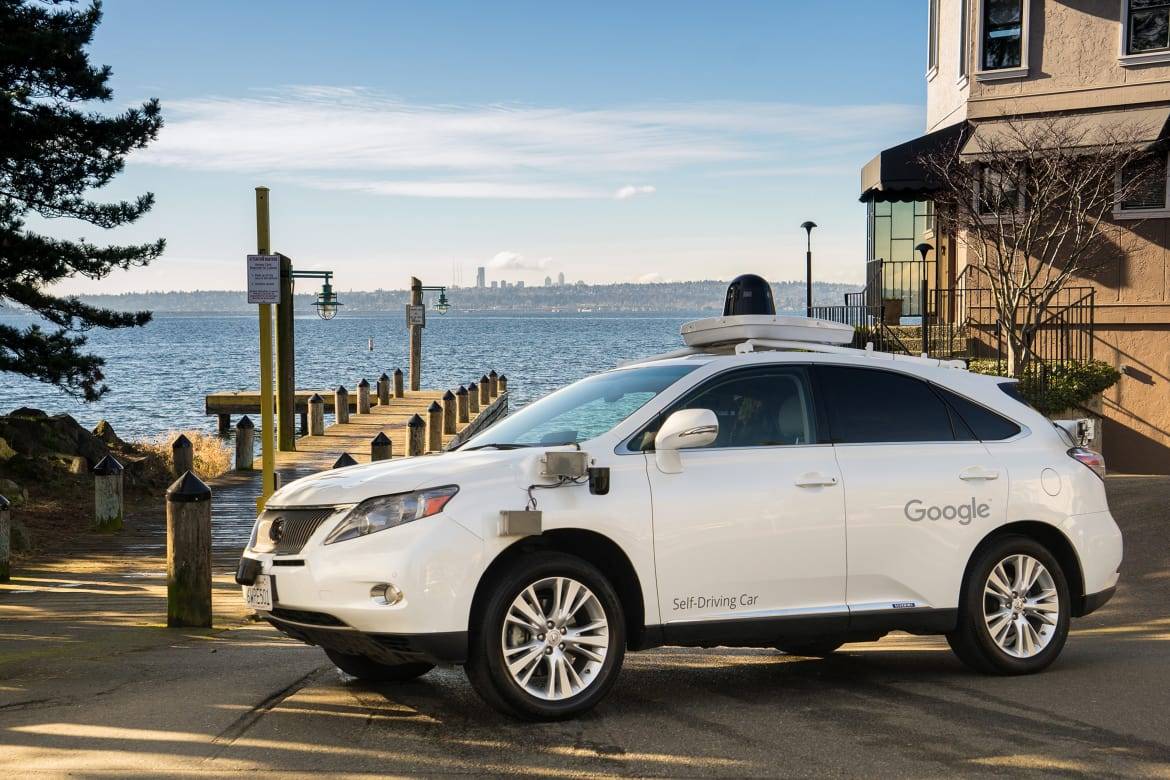Feds Move to Oversee, Foster Autonomous Cars


CARS.COM — The government today came down squarely in favor of hastening the day when the human driver can be eliminated from the safety equation in vehicle operation, while also setting a policy for increased scrutiny of development of autonomous cars before they are road-ready.
Related: What’s the Future of Autonomous Driving?
Following a newspaper editorial by President Barack Obama and White House fact sheet touting the potential safety and social benefits of self-driving cars, the Department of Transportation and National Highway Traffic Safety Administration announced a policy with four major thrusts:
- Guidelines including a voluntary 15-point safety assessment with data and documents to be submitted by automakers and researchers on how they are meeting each goal. It does not mandate particular ways to do that, but NHTSA wants the information provided four months before vehicles are put on the road. It is voluntary because NHTSA does not currently have the authority to compel it, but developers generally have supported such a federal effort to provide some legal cover for their efforts and to avoid a patchwork of state rules.
- A model for state policies that defines federal versus state responsibilities and works toward a “consistent national framework” for testing and deployment of self-driving cars. States from California to Michigan to Florida have proceeded with rules that vary on vehicle and driver requirements. A key area: States regulate human drivers and their actions, the feds regulate vehicles. But with autonomous cars, the vehicle software is the “driver” and thus falls under federal oversight.
- A review of current federal regulation with a view to providing more flexibility in interpretation, as well as exemptions in some cases, to “ensure the safe development” of automated vehicles. NHTSA emphasized it has existing authority to order a recall in some cases.
- Consideration of the need for new regulatory power, potentially requiring new laws, to oversee safety, while encouraging development. That might include being able to review new technology before a vehicle is sold, as well as to regulate later software updates that alter vehicle operation. NHTSA currently sets safety rules, automakers certify that vehicles meet them and NHTSA steps in after they are sold if a defect is discovered.
Why Encourage Autonomous Cars?
In the announcement, NHTSA Administrator Mark Rosekind emphasized the safety rationale for self-driving cars. “Ninety-four percent of crashes on U.S. roadways are caused by a human choice or error,” he said in a statement. “We are moving forward on the safe deployment of automated technologies because of the enormous promise they hold to address the overwhelming majority of crashes and save lives.”
NHTSA also noted that computers can collectively learn from mistakes, while human drivers “may repeat the same mistakes as millions before them.” It also pointed to potential social benefits of autonomous cars, including improved mobility and more public options for the elderly, people with disabilities, and for people who can’t afford or don’t want to own a car.
Automaker and Developer Reaction
The policy breaks new ground in encouraging cooperation and data sharing, a practice senior NHTSA officials noted in a briefing is more common in the aircraft industry and not something that has been a characteristic of the auto industry.
But automakers and other developers working on self-driving vehicles generally lined up to support the federal policy effort. “Importantly, the guidance will help establish the basis for a national framework that enables the safe deployment of autonomous vehicles. Strides in this technology have the potential to improve safety on our roads and reduce congestion in urban areas,” Ford said in a statement. The automaker has committed to a self-driving ride sharing vehicle by 2021.
GM, which plans a test of self-driving Chevrolet Bolt EVs with ride service Lyft, said, “We welcome the effort, will review the guidance and look forward to continuing the constructive dialogue on how to safely deploy [autonomous vehicles] as quickly as possible.”
The two major trade groups of automakers, the Alliance of Automobile Manufacturers and Global Automakers, both issued support. And in a statement for the Self-Driving Coalition for Safer Streets, David Strickland, coalition general counsel and a former NHTSA administrator, said, “This is an important step forward in establishing the basis of a national framework for the deployment of self-driving vehicles.” The coalition was founded by Google, Ford, Volvo, Lyft and Uber, which earlier this month launched the first public self-driving test of its rideshare service in Pittsburgh.
Much of the policy takes effect right away. The regulators also are beginning a public comment period that could lead to some revisions and NHTSA said the policy would be updated annually.
The 15-Point Assessment Guideline
Regulators say the 15-point vehicle assessment guideline for all researchers applies primarily to fully automated vehicles but that portions apply to lower-level automated vehicles, such as those from Tesla, and their makers also will be asked to complete applicable parts of the assessment. For oversight purposes, regulators now are adopting the SAE International system for determining levels of automation.
The 15 areas to be assessed are:
- How and where the Highly Automated Vehicle is designed to operate
- How the HAV system detects and responds to objects and events
- How the vehicle responds to system failure and falls back to a “minimal risk condition”
- Methods used to test, validate and verify the HAV system
- NHTSA registration and certification
- Recording of test data for “information sharing, knowledge building and crash reconstruction”
- The process for how an HAV performs after a crash
- Privacy “considerations and protections” for HAV users
- Engineering practices for “reasonable system safety”
- Cybersecurity protections against hacking
- How the system communicates information to the driver, occupant and other road users
- Crashworthiness
- Education and training for users
- How vehicles are programmed to address ethical dilemmas, such as when a choice will increase safety for the HAV, but create safety risk for others on the road
- How software is designed to comply with all traffic laws

Former D.C. Bureau Chief Fred Meier, who lives every day with Washington gridlock, has an un-American love of small wagons and hatchbacks.
Featured stories




